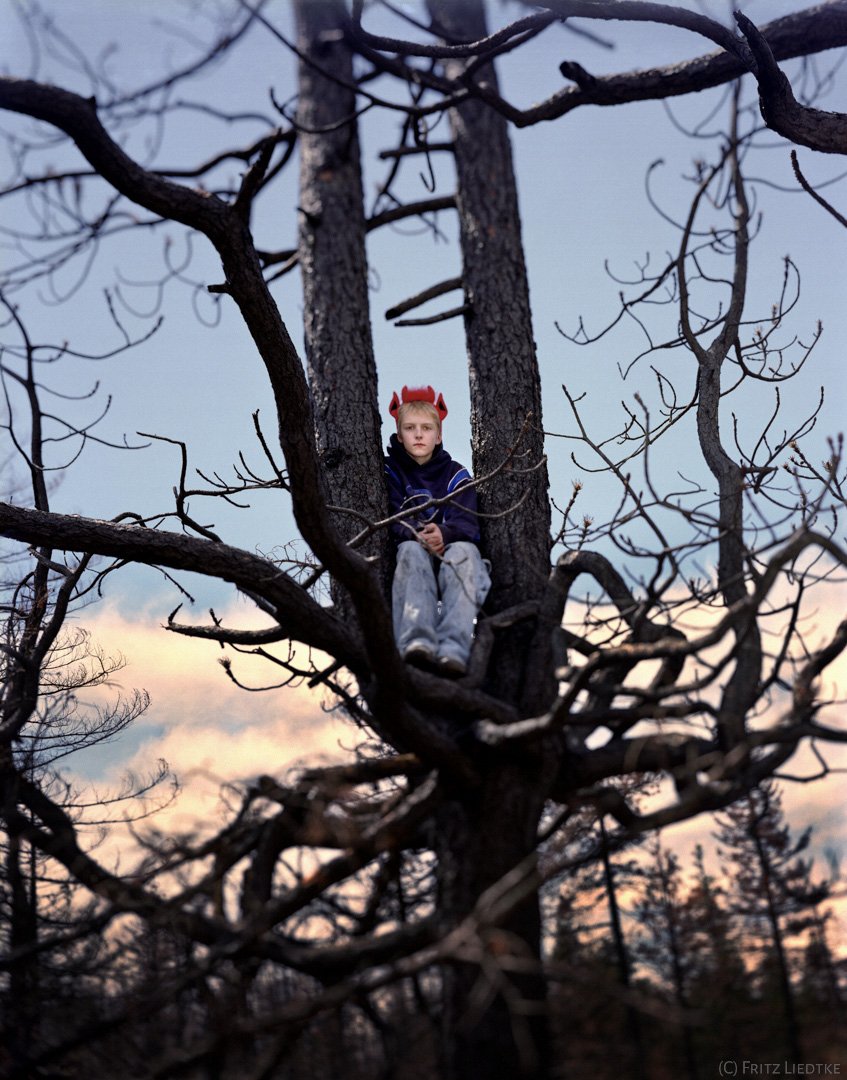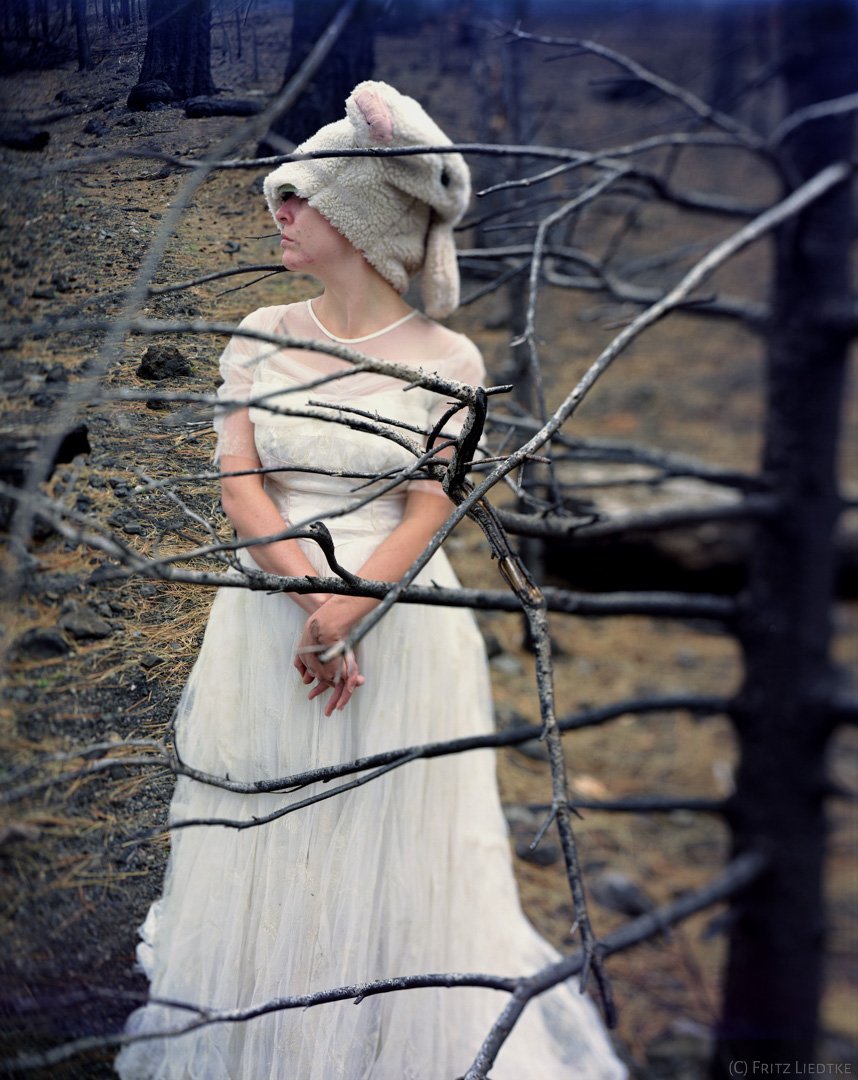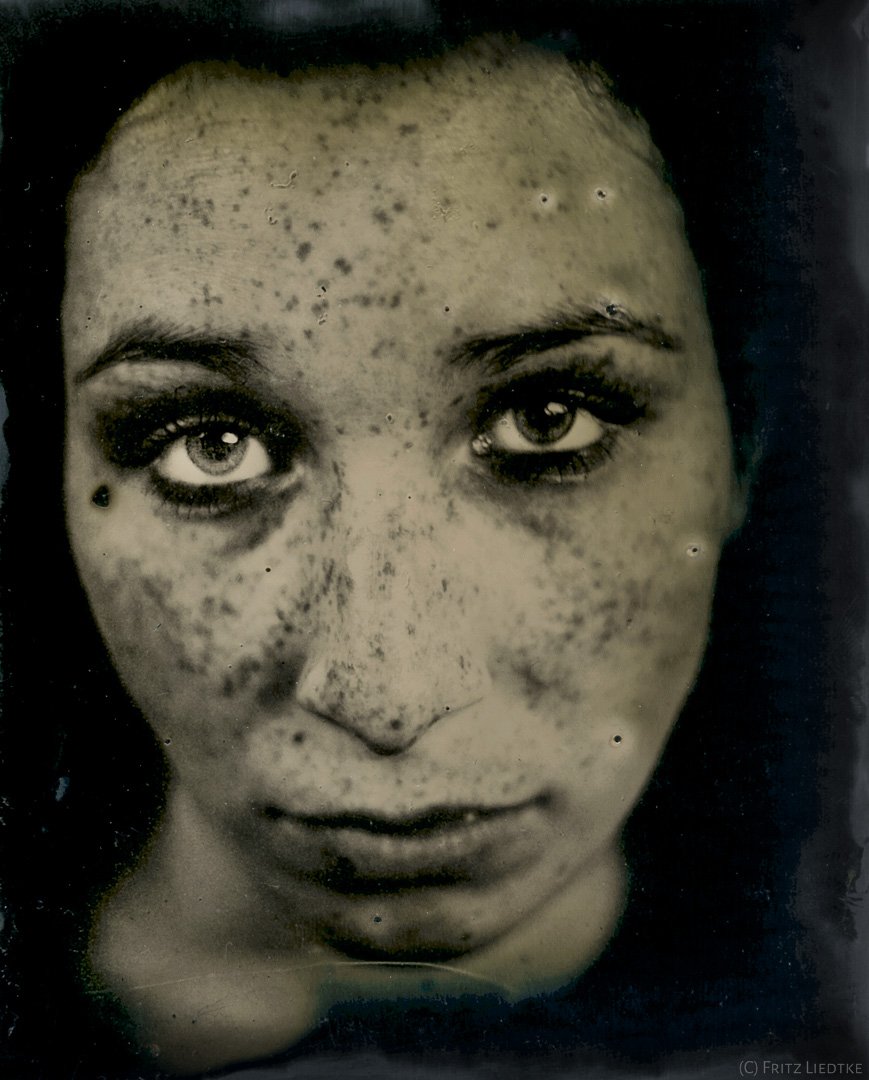
Select Work
The following are select images from 3 legacy projects that I still love...
Through the Shadow
In the late summer of 2003, a forest fire erupted in the dry forests of the Cascade Mountains near Sisters, Oregon. Over the course of the next 5 weeks, the B and B Complex fire would scorch over 90,000 acres of forestlands before it was contained.
The raw power of fire left its indelible mark on the landscape, and upon me: it was apocalyptic, bizarre, powerful, spooky, surreal. I spent an artist residency wandering this charred landscape for two weeks; it left me stilled and in awe.
Metaphor abounds here: beauty from ashes; life and death; the ravages of war; creation and the fall; body and environment; phoenix rising. Without attempting to create literal interpretations of such themes, I did want to explore the juxtaposition of bringing living people into this environment of death and decay. To make surreal work in a surreal place. And so we did.
While in Sisters one afternoon, I showed some Polaroids of my work to an older woman with whom I was speaking. Repeatedly she pulled out a portrait I’d taken of a young girl struggling with manic depression. Looking at it, she said it reminded her of part of Psalm 23. As she quoted it, I had to agree:
“Yea, though I walk through the valley of the shadow of death, I will fear no evil, for Thou art with me.”
***
My thanks to Caldera Arts for the residency that allowed me to create this work with this community of gracious people. Images in this series were captured on medium and large format film; finished prints are printed with archival inks on archival cotton rag paper. Limited editions are available for particular images.
Beneficio de Cafe
Coffee, Family, Community in Central Nicaragua
Tucked away in a barrio in Esteli, Nicaragua, on the edge of a dry stream bed, is the Beneficio Centro America. It’s a rambling, homely place, with the delicious aroma of freshly ground coffee floating in the dusty air.
This family-owned coffee processing company is run by Abraham Enrique Castillo. Abraham is a gentle, inviting man, getting along in years, kind and easily understood. He’ll gaze at you over his glasses, welcome you to his shop, offer you a refresco or coffee, and show you around.
If you follow him through the building and out the back door, through the small farmyard of coffee plants and tall trees, lounging dogs and clucking chickens, you’ll come to an acre of concrete. Strewn with swaths of coffee beans—a patchwork quilt of green, gold, and brown—it’s here that Abraham and his crew begin the process by drying the beans in the sun.
Abraham steps onto the concrete and makes the rounds, from patch to patch. He stoops over to pick up a couple beans, crushing them between his fingers, testing whether they’re ready to be brought inside. Occasionally he’ll gaze up at the clouds in the sky, and mumble about whether it’s going to rain today or not. When he finds a batch that’s ready, he points them out to his assistants, who begin to rake and bag and carry them indoors.
Inside sit several machines; some are new, while others look like they’ve been around since before the revolution. Here they remove the coffee bean hulls, sort the beans by size, remove any defective beans or foreign matter (stones, twigs, pinto beans) by hand, roast and mill the coffee, then bag the grounds.
Like most small businesses in Nicaragua, the place of business is also the family home. By midafternoon, everyone is hot, sweating, and caked in dust. Everyone is invited into the dim, low-ceilinged dining room to share in a cup of coffee, served in locally hand-crafted mugs, accompanied by sweet-tangy cookies called rosquillas.
The beneficio is a family affair; neighbors and cousins and customers come and go. The space is dim and dusty, stacked with bags of coffee and beans, littered with wooden seats and sorting bins and lounging dogs, and filled with several generations of memories—and the sweet smell of freshly ground Nicaraguan coffee.
Sadly, Abraham is no longer present among the dust and bustle. Just 8 months after my time in Nicaragua, he passed away at 74 years of age. His legacy as a firefighter, Lion, businessman, radio aficionado, husband of 48 years, father, grandfather, and coffee lover will be sorely missed in his lifelong home of Esteli.
Tintypes
The tintype was introduced in 1853 by Adolphe Alexandre Martin. It was an immensely popular photographic medium, producing beautiful results in just minutes–the precursor to the modern Polaroid, but permanent.
While not actually produced on tin (modern tintypes are commonly on aluminum sheets), the collodion process was also used on glass, and called an Ambrotype.
Collodion tintypes (also called ferrotypes) are a challenge to produce. They require toxic, explosive chemicals; a deft hand; and a great deal of experimentation. The payoff, however, is huge: a unique, grainless image with an archival life nearly unequaled by paper-based prints.
A modern version of the historic tintype is also possible. Instead of collodion, a silver-gelatin emulsion is spread over the metal plate, and exposed. I have worked in both media.
All pieces are unique. Prices for tintypes are $350 for a 4×5 and $900 for an 8×10 plate. Archival prints of these plates are $300 for an 11×14, and metal print reproductions are available at 8×10: for $600. Please contact me about particular images you are interested in.


























